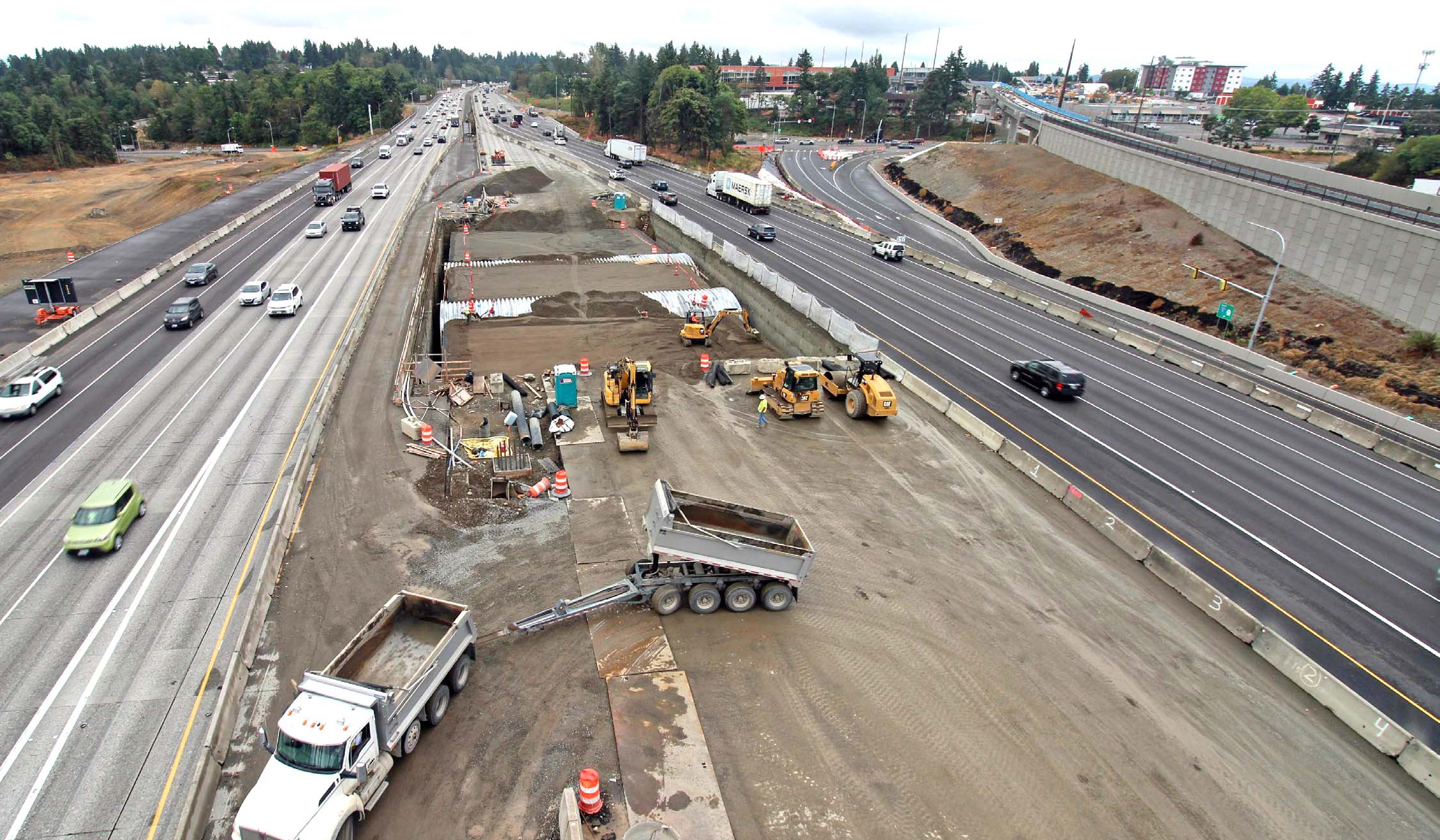Recent emphasis on actions to reduce large-scale greenhouse gas (GHG) emissions has pushed most state departments of transportation to develop carbon accounting practices and to develop strategies to mitigate the adverse environmental impacts of the materials that they utilize. To assist WSDOT, researchers at the UW Carbon Leadership Forum assessed and analyzed the GHG emissions of WSDOT’s current material practices and explored opportunities to decrease them.
Departments of transportation such as WSDOT use high volumes of construction materials such as asphalt, concrete, and steel. Because of their energy-intensive manufacturing processes, it is difficult to reduce the emissions associated with these materials, but there are readily available, low-cost solutions for reducing their environmental impacts. DOTs can help reduce GHG emissions by influencing the regional availability and use of low-carbon solutions that address emissions from these carbon-intensive construction materials.
To date, WSDOT had not conducted a systematic assessment of its construction-related GHG emissions, also known as embodied carbon or upstream (supply chain) Scope 3 emissions. These emissions, as opposed to those produced during the operation of a roadway such as vehicle fuel usage and roadway lighting, arise from the manufacturing, transportation, installation, maintenance, and disposal of construction materials.
The researchers collected a variety of data from WSDOT that included pay item lists and data from the WSDOT Materials Laboratory, Pavement Office, and Washington State Facilities. The main dataset was modified to create a framework for a whole lifecycle assessment. Lifecycle emission factors for primary construction materials were used to calculate upstream Scope 3 emissions.
The researchers found the five-year average upstream Scope 3 emissions from roadway construction between 2017 and 2021 to be approximately 310,000 metric tons of CO2 equivalent (a measure of global warming potential). On average, contributors to total upstream Scope 3 emissions were found to be materials production (85 percent), transportation (11 percent), and installation (4 percent). Upstream Scope 3 emissions from roadway construction (that is, excluding emissions produced by roadway operation) were found to be as much of a contributor to WSDOT’s GHG emissions as direct and indirect fuel or energy consumption. Finally, pavement construction—hot mix asphalt production in particular—was found to be the biggest contributor to upstream Scope 3 emissions from WSDOT roadway construction because of both its high consumption and high carbon intensity.
Using the dataset they created, the researchers analyzed scenarios and provided recommendations on the most impactful strategies that would help WSDOT reduce its Scope 3 emissions. They also proposed carbon reduction targets for WSDOT’s roadway construction activities, with a proposed decarbonization scenario to achieve near net-zero targets by 2050.
The impact of this project can be far-ranging. In addition to reducing its own GHG emissions, WSDOT can lead in the uptake and regional availability of low-carbon solutions for carbon-intensive construction materials such as asphalt, concrete, and steel by creating a market for lower-carbon materials.
Report: WA-RD 926.1
Authors:
Milad Ashtiani
Meghan Lewis
Monica Huang
Kate Simonen
UW Carbon Leadership Forum, Department of Architecture
Sponsor: WSDOT
WSDOT Technical Monitor: Loc Tran
WSDOT Project Manager: Jon Peterson

